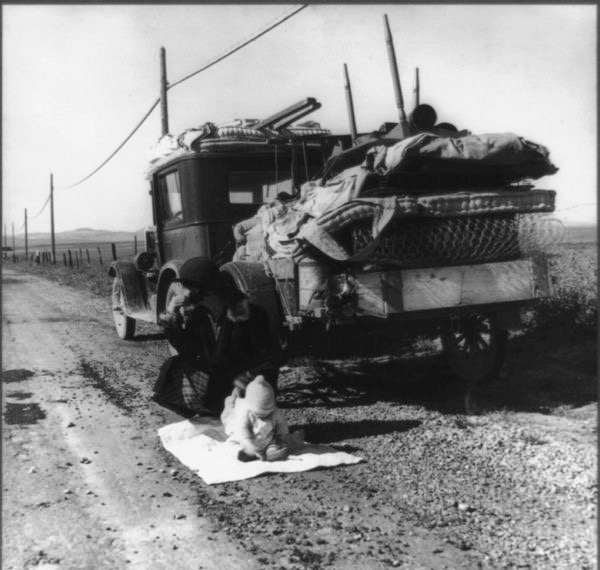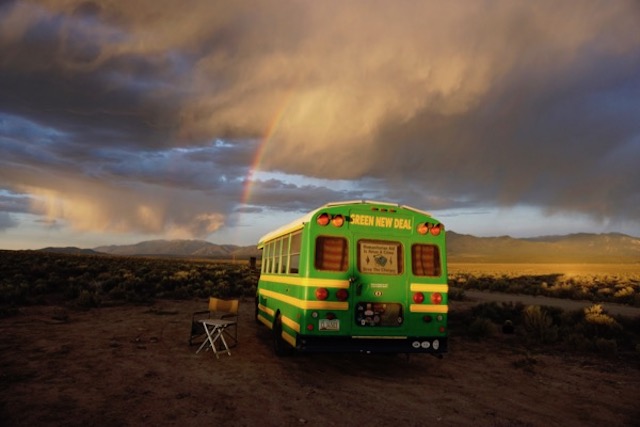“Blown Out, Baked Out, and Broke”
Nowhere left to run to
Will Climate Chaos Drive Public Support of a Green New Deal?
In May of 1934, dust storms from the Great Plains blew all the way across the country, with dust so thick that the street lights in Manhattan turned on in the middle of the day (UGA Co-Operative Extension):
dust storms of mid-May, 1934 … blew fine dust all the way from the panhandle of Oklahoma to New York City and Washington DC. The amount of dust was so large that it caused streetlights in Manhattan (New York, not Kansas) to come on in the middle of the day, and views from the Empire State Building looked like soup so thick that observers could barely see the ground because of the dust in the air.
The following year, in March of 1935, on the same day the FDR administration was testifying before Congress seeking funding for dust bowl conservation programs, another huge dust storm hit Washington DC: (from the Washington Post, “Black Blizard Blankets the National Mall”):
Creeping halfway across the Nation in a murky cloud extending 10,000 feet into the sky, the great dust storm of the Southwest and Midwest invaded the East yesterday, bringing grime and discomfort on the first day of spring.
Even as the Administration determined upon a combined drive by seven government agencies to fasten the Midwest’s rich farm soil against the destructive dust storms, the swirling particles of earth from Kansas, Oklahoma and Texas sifted into the District and dirtied the windows of Federal Buildings.
For superb contemporaneous historical accounts of the Dust Bowl and Mississippi River flooding, watch these classic documentaries by FDR’s Resettlement Administration, a short lived but important New Deal Agency and the Farm Security Administration:
- The Plow That Broke The Plains (1937)
- The River (1938)
Farmers were “Blown Out, Baked Out, and Broke“.
“We left the mountains and the hills slashed and burned – and moved on.“
I can’t help but hear echoes in the current climate change driven, clearcut logging, and drought induced wildfires and smoke now ravaging the west coast.
Will that catastrophe – coupled with hurricanes, floods and other extreme weather AKA “climate chaos” – drive decisive public support for a Green New Deal?
I wrote about all that 8 years ago, in the wake of Superstorm Sandy’s devastation, in a post titled:
I strongly urge folks to read that, so will provide just this short excerpt here, from Donald Worster’s classic book, Dust Bowl: The Southern Plains in the 1930’s.:
Some environmental catastrophe’s are nature’s work, others are the slowly accumulating effects of ignorance or poverty. The Dust Bowl, in contrast, was the inevitable outcome of a culture that deliberately, self-consciously, set itself the task of dominating and exploiting the land for all it was worth.
The Dust Bowl came into being during the 1930’s, … the age of the Great Depression. Coincidence, some might say, that the two traumas should come at the same time. Few who have written on either affair have noticed any connection between them. My argument, however, is that there was in fact a close link between the Dust Bowl and the Depression – that the same society produced them both, and for similar reasons. Both events revealed fundamental weaknesses in the tradtional culture of America, the one in ecological terms, the other in economic. Both offered a reason, and an opportunity, for substantial reform of that culture.
History may not repeat itself, but it sure does echo.


